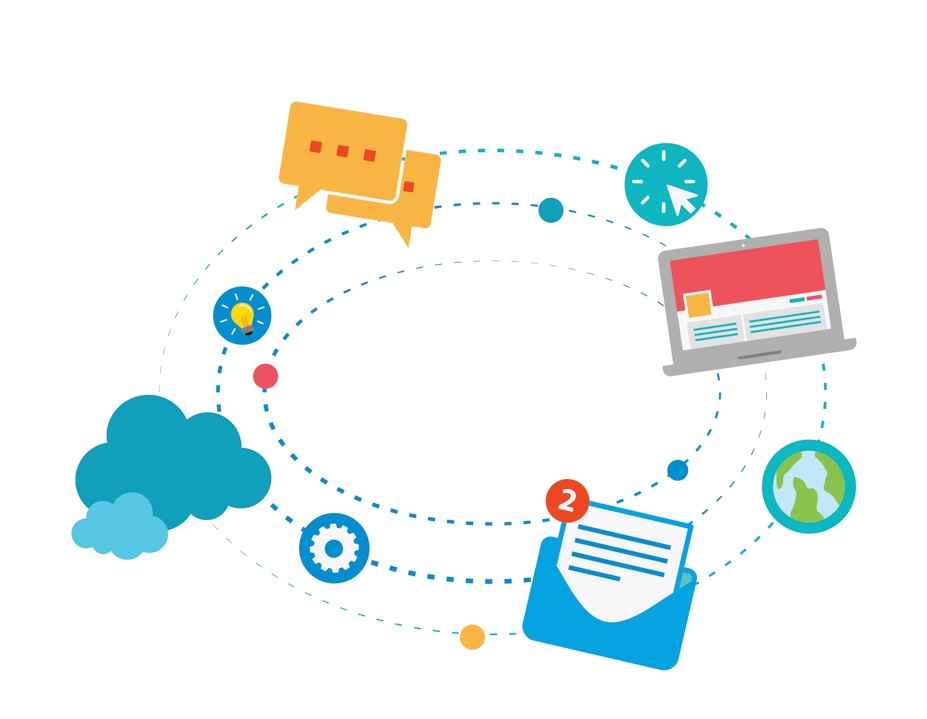Understanding CDNs: The Basics

Imagine you’re at a restaurant in New York, but your favorite dish is only made fresh in California. Obviously, getting it delivered quickly and still hot is a challenge. This is similar to what happens when you try to access online content that’s stored far away from you—it can be slow and frustrating. This is where CDNs come into play.
Think of CDNs as a chain of restaurants spread across the country, ensuring your favorite dish is available nearby and always served fast and at the right temperature.
Essentially, CDNs store copies of digital content (like videos, images, and web pages) in various locations globally to make sure they reach you quickly and efficiently, enhancing your online experience.
The Evolution of CDNs
Initially, CDNs were like simple diners serving up static content—images, CSS, and JavaScript files—that were quick and easy to prepare and did not require much customization. But as the Internet grew, users wanted more sophisticated, dynamic dishes—content that changes based on who asked for it, like personalized news feeds or live streaming videos.
This shift demanded a more advanced CDN setup capable of swiftly delivering complex, customizable content without hiccups, ensuring a seamless experience for users worldwide.
To delve deeper into how CDNs are optimized for such tasks, consider exploring how AI and edge computing are leveraged in CDN for streaming video, enhancing the delivery of video content efficiently.
The Ingredients of Next-Gen CDNs: AI and Edge Computing
To meet the growing appetite for rich, dynamic content, CDNs started getting smarter. They began using artificial intelligence (AI) and machine learning to predict and manage traffic flows, optimizing content delivery paths in real-time. Think of AI as the master chef who knows exactly when and where a dish will be ordered, ensuring it’s prepared and delivered most efficiently.
Edge computing is another key ingredient, moving the kitchen closer to the diner. Processing and storing content closer to the user (at the “edge” of the network) reduces the distance data has to travel, reduces delivery times, and keeps the content hot and fresh.
Overcoming Streaming Challenges
As more people demand high-definition, buffer-free streaming, the pressure on CDNs has skyrocketed. High traffic, the need for low latency (the time it takes for data to travel from source to destination), and the quest for ultra-high definition content are just some of the challenges.
Next-gen CDNs tackle these with advanced AI and edge computing capabilities, ensuring smooth streaming of your favorite shows and events without the dreaded buffering symbol.
Beyond Streaming: Gaming and More
CDNs aren’t just about watching videos; they also transform gaming and other graphics-intensive applications. By reducing lag and ensuring rapid delivery of high-resolution graphics, CDNs are making online gaming more immersive and responsive. Future advancements promise even more seamless experiences, with real-time optimizations and faster content delivery.
Key Players and Innovations in the CDN Landscape

Varnish and Intel: Leading the Charge
The collaboration between Varnish Software and Intel marks a significant milestone in the evolution of CDN technology. By combining Varnish Software’s expertise in caching and HTTP acceleration with Intel’s hardware and network optimization advancements, this partnership has achieved groundbreaking throughput levels for video content delivery.
This achievement not only showcases the potential of next-gen CDNs to handle the increasing demand for Ultra-High Definition (UHD) video streaming but also sets new industry standards for efficiency and capacity.
Varnish’s approach to optimizing content delivery by caching content closer to end-users significantly reduces latency and increases speed.
This ensures that streaming services can deliver high-quality content without interruptions or delays. Intel’s contributions, especially in server and network optimization, are pivotal in achieving these high throughput levels. They highlight the synergy between software solutions and cutting-edge hardware in enhancing CDN performance.
Innovations Across the Board
While the collaboration between Varnish and Intel sets a benchmark in performance, other companies are also making significant strides in CDN technology, each bringing unique solutions to the table.
SynEdge
SynEdge stands out with its smart and optimized CDN strategy, which incorporates multiple CDN platforms. This strategy ensures the automatic selection of the best CDN for each request, minimizing latency and maximizing end-user speed. Their approach emphasizes the importance of intelligent, dynamic CDN selection in improving content delivery efficiency.
Akamai
As one of the pioneers in the CDN industry, Akamai continues to dominate with its extensive global network and innovative solutions designed to accelerate web content, mobile applications, and cloud services. Their edge platform secures, delivers, and optimizes content, underscoring Akamai’s commitment to enhancing online experiences at scale.
Cloudflare
Cloudflare is known for its integrated global cloud network that delivers secure, private, fast, and reliable Internet. With a strong focus on security and performance, Cloudflare’s services, including DDoS protection, secure web gateway, and distributed web caching, ensure content is delivered safely and swiftly to users worldwide.
IO River
IO River is revolutionizing the CDN landscape by enabling organizations to seamlessly manage multiple edge platforms, ensuring the fastest and most cost-effective content delivery from optimal locations. Their platform boasts remarkable improvements in performance (up to 50%) and significant reductions in delivery costs (up to 40%), while maintaining Five Nines (99.999%) availability. This innovation democratizes access to advanced CDN management capabilities, previously available only to the largest content providers through custom tools, making it accessible to a wider range of users.
Fastly
Fastly emphasizes edge computing alongside its CDN services, allowing developers to run, secure, and deliver digital experiences at the network’s edge. This approach improves speed and reliability and offers developers more control over how and where content is delivered.
Looking Ahead: The Future of CDNs and Streaming
CDNs’ journey is far from over. With ongoing advancements in AI, machine learning, and edge computing, we’re heading towards even more personalized and efficient content delivery. CDNs will improve their understanding and prediction of user preferences, ensuring that whether you’re watching videos, playing games, or simply browsing, your digital experiences will be smoother, faster, and more enjoyable.
Frequently Asked Questions about CDNs
Why are CDNs important for streaming high-definition video and gaming?
CDNs are crucial for streaming high-definition video and online gaming because they minimize latency and ensure the rapid delivery of large files and data-intensive content. This prevents buffering and lag and enhances the overall user experience by providing smooth, high-quality playback and responsive gaming environments.
What are CDNs in networking?
When it comes to networking, a Content Delivery Network (CDN) is a system of dispersed servers that sends web pages and web content to users based on three factors: the user’s location, the webpage’s origin, and a content delivery server. CDNs are made to minimize the physical distance data must travel to maximize speed and connectivity, making the Internet more dependable and efficient.
What is a CDN example?
An example of a CDN is the Akamai Technologies network, one of the world’s oldest and largest CDNs. It delivers content for major companies like Facebook, Apple, and Amazon. Akamai’s CDN enhances user experience by distributing content from locations closest to the end-user, significantly reducing website load times and improving performance.
What are the two types of CDNs?
The two main types of Content Delivery Networks are:
Push CDNs: Content creators upload their content directly to the CDN, delivering it to users upon request. Push CDNs are ideal for websites with large files that change infrequently.
Pull CDNs: These CDNs automatically pull content from the server upon the first user request and cache it for subsequent requests. They are suitable for websites where content changes regularly and minimize the need for manual updates.
What does the Azure Content Delivery Network (CDN) do?
High-bandwidth content can be delivered globally with the Azure Content Delivery Network (CDN), which caches the content at well-located physical nodes across the globe. It offers scalable, safe, and quick content delivery for all kinds of data, which boosts the speed of online apps. Furthermore, Azure CDN connects with other Azure services like Web Apps, Cloud Services, and Storage to offer a smooth and improved cloud service experience. This optimizes content delivery to end users and enhances user satisfaction and site load times.
Wrapping up
The evolution of CDNs from simple networks designed for static content delivery to sophisticated systems capable of supporting dynamic, high-definition streaming and gaming represents a significant technological advancement. Next-gen CDNs, with their reliance on machine learning, AI, and edge computing, are not just keeping pace with the digital era’s demands but are setting new standards for what is possible in content delivery.
As we move forward, the role of CDNs in ensuring a seamless, high-quality online experience—be it for video streaming, gaming, or beyond—will only become more critical. The continuous innovation by key players in the industry promises an exciting future for CDNs, shaping the next generation of digital experiences and opening new possibilities for content consumption worldwide.
In conclusion, as we navigate through the advancements in CDN technologies and embrace the future of streaming and digital experiences, the security of our digital platforms remains paramount. Ensuring that our websites are fortified against threats is just as crucial as enhancing their performance. For those interested in safeguarding their online presence against evolving security challenges, exploring the 37 Best Website Security Software solutions can provide the necessary defense mechanisms in today’s digital age. Discover how you can protect your digital assets and ensure a secure, seamless experience for all users






